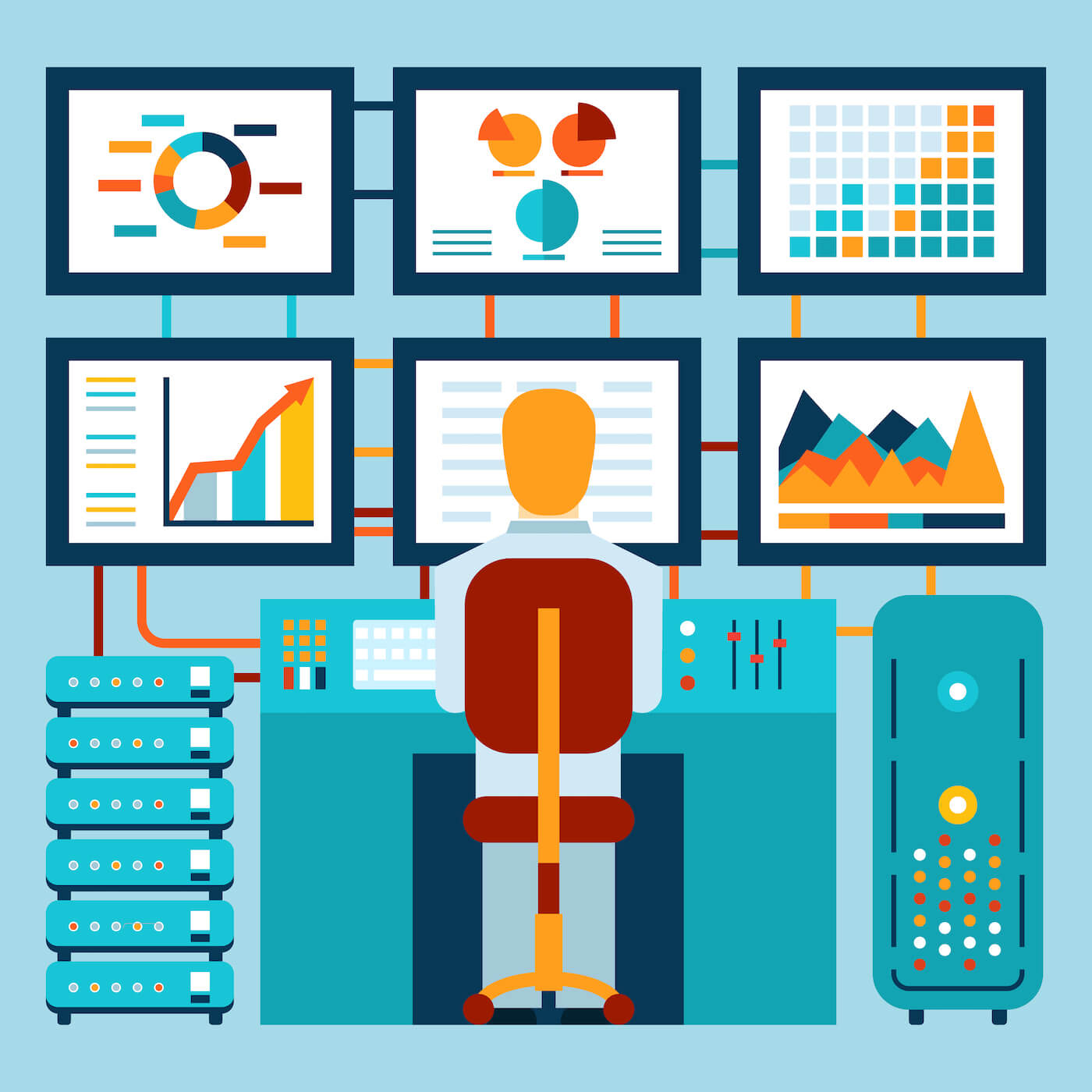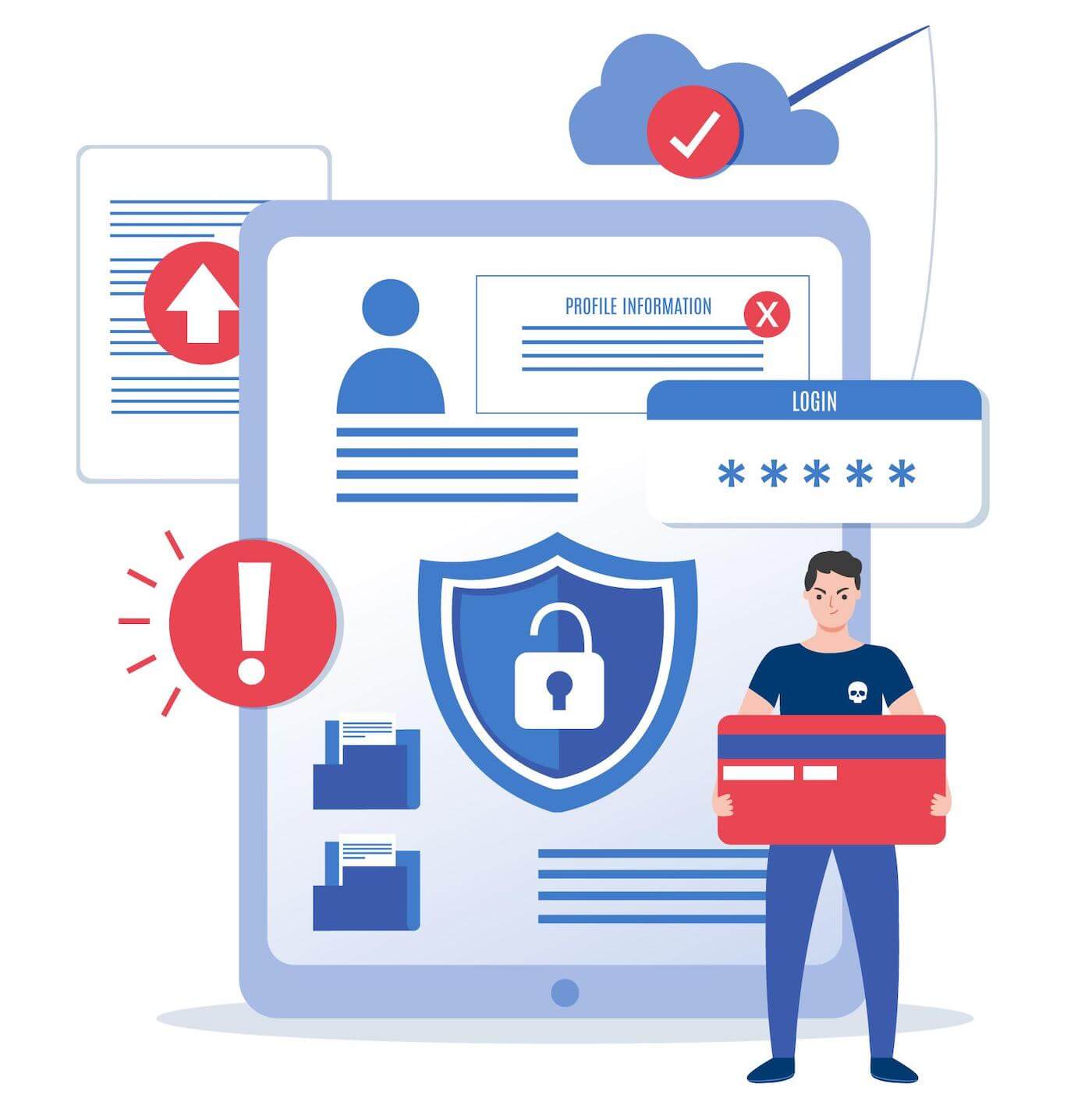What Does Employee Tracking Software Do?
Many businesses utilize employee monitoring software to stay on top of their business operations. As a manager or even an employee, the idea of implementing employee tracking software can seem daunting. For some, it may seem like a violation of employee privacy. However, tracking employee behaviors on company networks is actually crucial for many business use cases.
Whether you’re an employee who is being tracked or an employer looking to track their employees, this basic software has many functional uses and it will help monitor your company data and security.
Here’s what employee tracking software is all about:
What is Employee Tracking Software Exactly?

Employee tracking software, also known as employee monitoring software, is a program downloaded on a company computer set to track common behaviors or actions on that device. This software can only track the computers and behaviors that it is set to monitor, too.
In general, these programs will track attendance, time spent on a project or task, project time estimates, attendance, time spent working on applications or websites, data movement, potential insider threat activity (like weird behavior), malicious messages (if tracking communications), among other things.
There are hundreds of tracking software out there, so the features can range widely. However, most software will be able to monitor keyboard depressions, mouse clicks, the applications clicked, and file movements. It might also record the user through a web camera or record the on-screen movement in real-time. And admin users can usually access user histories for company audits.
Key Purposes of Employee Monitoring Solutions
For the most part, employee monitoring software is used for three main purposes: productivity monitoring, company security, and remote work monitoring.
When combined with an entity monitoring system, employee tracking software can provide helpful data. It can improve productivity, stop data breaches from happening, and prove to be a valuable data source when evaluating employee performance.
Employee Productivity Monitoring
Employee monitoring software is usually part of a larger employee monitoring system. Managers might implement time tracking, attendance logs, and time stamps on application and web page usage to see how long certain projects take.
Keystroke logging is a key feature in employee monitoring and it can be useful for both purposes. For productivity tracking, managers can use the keystroke logging feature to record conversations in company messaging centers. They can then see if their employees were actually working or if they were slacking off all day.
This software might be used in conjunction with productivity software, and team management software as well. It can also be used to track employee burnout and low company morale.
Security Tracking Tool
When used for security, the software might also be useful as a data loss prevention tool. It can monitor normal behaviors associated with a user or computer and alert management when those behaviors have deviated. It might also be able to watch certain files and alert managers when those files have been modified in any way.
For security settings, keystroke logging can be used to detect when a user is typing weird code as if they were going to send sensitive data to a colleague or upload it to a malicious site.
Some software also uses user behavior analytics (UBA) to track employee behavior trends to see what types of activities they normally do. When the employee veers from their normal activities, the administrator is alerted to this and they can investigate it.
Remote Monitoring
Monitoring software for remote workers is crucial since employers will have no other way of monitoring how work gets done without the software.
With remote work monitoring, the employee will most likely have to download the software onto the computer in their own time. Or the administrator would have to install the software on a company computer and then ship the computer out to the employee. IT professionals can also be granted remote access through a virtual machine to download the software onto the remote workers’ computer.
The monitoring software would work the same on a remote team, but it would also work as an extra security measure to protect the company against a poor personal network firewall at your employees’ homes.
Remote employee monitoring won’t be able to provide the same security protocols as when used in-house, such as data visibility and data loss prevention. However, it can detect insider threats through UBA technology and alert to other security concerns.
Remote team monitoring would be largely focused on remote productivity, remote employee management, and boosting remote team performance.
What Employee Activity Does Monitoring Software Track?

Monitoring software is typically only a program on a computer, so it will only track the user behaviors associated with the computer it is downloaded on. It can also only track certain behaviors. For example, this is not a surveillance system. While it can track some employees through the web camera feature, this feature can only be used with employee approval.
This tracking app can monitor on-screen behaviors, like the files and programs that the user opens. By live recording or taking screenshots, administrators can see the types of programs that an employee is using, the words they are typing, and the people their employees are talking to.
If employees are watching Netflix when they should be working on the next big report, then the employee tracking software will capture that.
This software will monitor all employee computer activity during work time. Key things that this software tracks include:
- Communication
- Time spent on websites and applications
- Webcams
- Keystroke
- Computer screens
- Attendance
- Time tracking for project management
- Insider threats
Does My Company Really Need Employee Tracking Software?
For the wary employee, employee monitoring sounds untrustworthy. Like every employee, you know you are a good employee and you don’t feel safe when your actions are being monitored. The functionality of employee monitoring isn’t about untrustworthiness.
The truth is that cyberattacks are extremely prevalent. Cybersecurity threats are constantly evolving and they can be detrimental to every business. Data breaches from malware infection, code injection, Distributed Denial of Service (DDoS) attacks, phishing attacks, and insider threats threaten every sized business. Unfortunately, it can be as simple as not changing your password frequently, or leaving your computer unattended for only a minute.
The unfortunate reality is that while you may be a great worker, hackers and cyber criminals are targeting companies in order to exfiltrate sensitive data. Statistics suggest that 75% of organizations globally experienced a phishing attack in 2020.
In 2020, insider threats due to credential theft cost $27.9 million. This, and the cost of downtime associated with cyber attacks, is why a majority of businesses use security tools like data loss prevention (DLP) tools, user behavior analytics (UBA) tools, and employee surveillance tools to protect their company.
How Does Employee Monitoring Work Exactly?
As mentioned, there are numerous employee monitoring tools on the market. So the features that you have to choose from will depend on the software that you go with. SoftActivity monitor, for example, has the following features:
- Activity monitoring for multiple users on one screen in real-time with a live view of remote desktops
- Tracking visited websites and used applications
- Triggered action alerts
- Email and communication records
- Security and employee productivity reports
- Instant notifications for company policy violations
- Investigations for security incidents and high-risk employees
- Vendor access monitoring
- Internet and program monitoring
- Employee attendance tracking
- Perform compliance auditing following HIPAA and PCI
- Insider threat detection and prevention
- Reports sent to admin users
Administrators who have access to the software will usually install the software on a single device known as the main console. If the console is connected to the company network and the company workstations, then the administrator can deploy the software and install it from the console.
Monitoring and managing happens at the console, but reports can also be emailed out to certain individuals. Admin can utilize the console to monitor time spent working on projects to identify which websites their employees were actually visiting. They can also access the login alerts to see when employees were in the office and when they clocked off.
The software can be configured to work the way that your business needs. For example, to minimize security and privacy risks, you can turn off the keystroke logging feature. You can also set it to privacy mode where the keystroke logging feature won’t track any passwords or sensitive banking data.
Employee monitoring solution comes with versatile sets of tools but can be altered to fit each company’s unique employee policy.
To Sum It Up: Employee Tracking Saves Money
With comprehensive user activity reports, sophisticated user tracking, and a central console for real-time monitoring, employee monitoring makes a lot of sense. It is proven to cut down employee monitoring time in half!
With an employee monitoring tool like SoftActivity, you will be able to better track project creep. You’ll also be able to spot lazy employees and create performance reports based on solid data. In terms of security protection, employee monitoring is vital. The on-screen recording will alert administrators to behavior that is not being conducted by their employees.
Monitor when data goes in and out so that you can stop insider threats from leaking data out of your company network!
By SoftActivity Team.